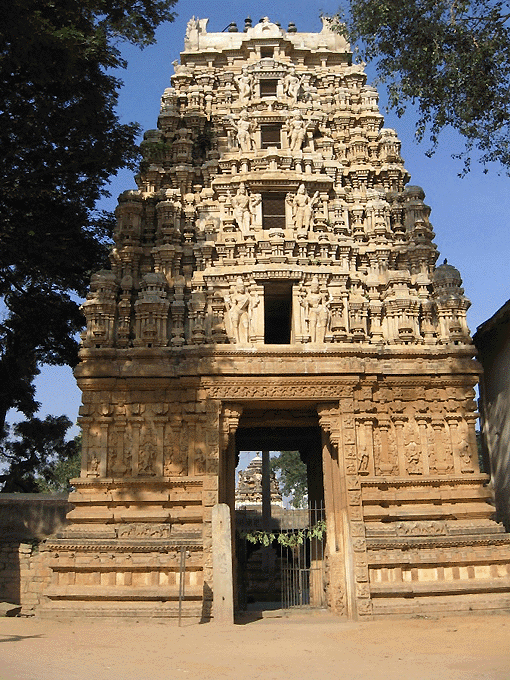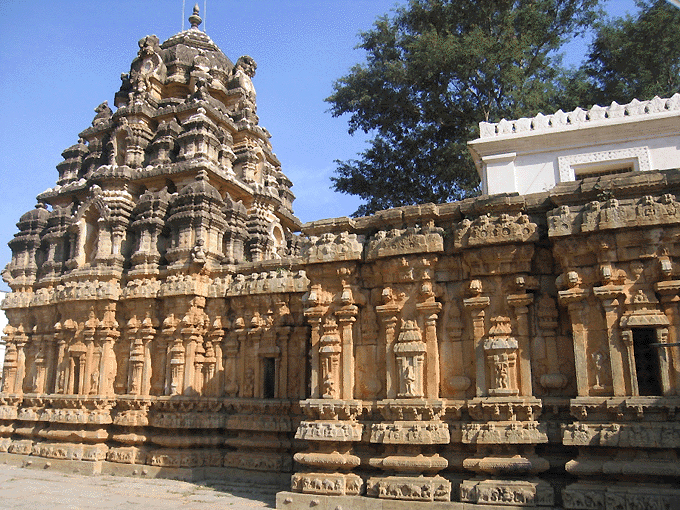
|
|
|
|
The presiding deity here is Shiva Somesvara with his consort Parvati, who is in a separate shrine. Sri Somesvara is a swayambhu linga made of saligram stone. Lord Brahma is here both as a member of the Trimurti, and as one of the original subsidiary deities. The original gopuram and mandapa are thought to have been added by Kempe Gowda in the 17th century, but even so, the top portion has unfortunately been lost. The trikutachala temple faces the east, the main structure being built of granite, while the ornamentation and murti are of pot stone. The temple was rebuilt about fifteen years ago, but the old features have been faithfully preserved.
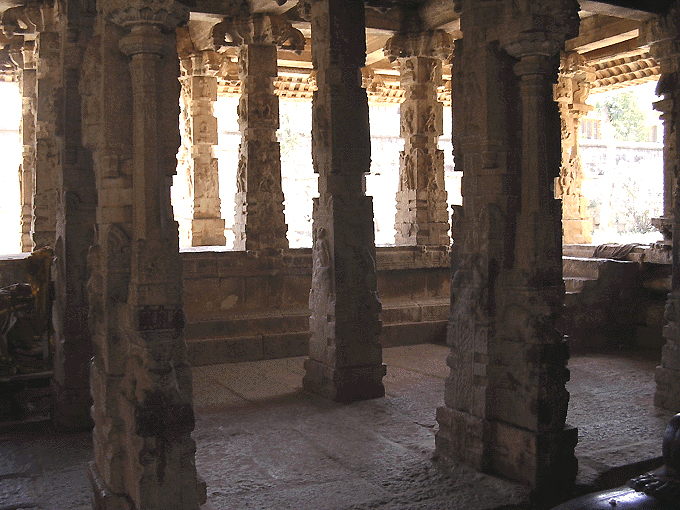
Temple Interior In the west cell of the sanctum sanctorum is Sri Somesvara, a medium-sized linga, installed by the Cholas who built the temple. In the south resides a beautiful deity of Sankara-Narayana. This five foot tall deity was carved by the Hoysala, who included a stone torana above Him. To Sankara-Narayana's right is Shiva with jata-makuta, trisula and akshamala. On the left is Vishnu with kirita-makuta, chakra and sankha. On a pedestal below are Nandi and Garuda, together. In the north cell resides a beautiful set of the Saptamatrika (seven mothers), without Virabhadra and Ganapati. To the west is Chamunda, also Hoysala. The granite navaranga pillars are round and bell-shaped. The garbhagriha and sukanasi have finely carved lotus ceilings. The navaranga mandapa has four square pillars, sixteen-sided, on which are carved many excellent images. Among them are Virabhadra, Rishi Markandeya, Shiva in various forms, Vyaghrapada, Kodandarama, dancing Ganesha, Smya-narayana, Dvarapalas, later Naga images, and Shanmukha riding upon a fine peacock, standing five feet tall. On the central ceiling are Urna-Mahesvara surrounded by the Dikpalas.
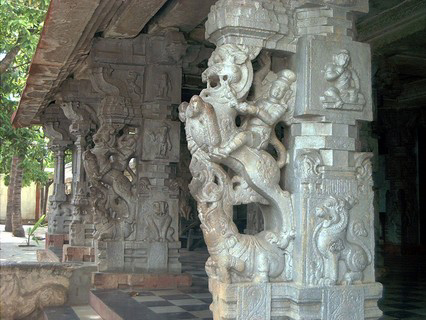
Temple Carvings On the navaranga doorway there is a sculpted slab with the Trimurti personalities, with Shiva in the middle. A seated deity of Lord Brahma, one of the chief original murtis, was preserved from the original tower and has been resituated. It is now embedded into the compound wall, along with several other original deities. Somesvara Temple's most distinctive architectural feature is the large and ornate gopuram at the main entrance. The tower has five open doorways, tiered upwards, with full-size Dvarapalakas standing beside the doorways on each level. The temple has a massive pillared mukha mandapa, and various Vijayanagara inscriptions dating back to 15th century A.D.
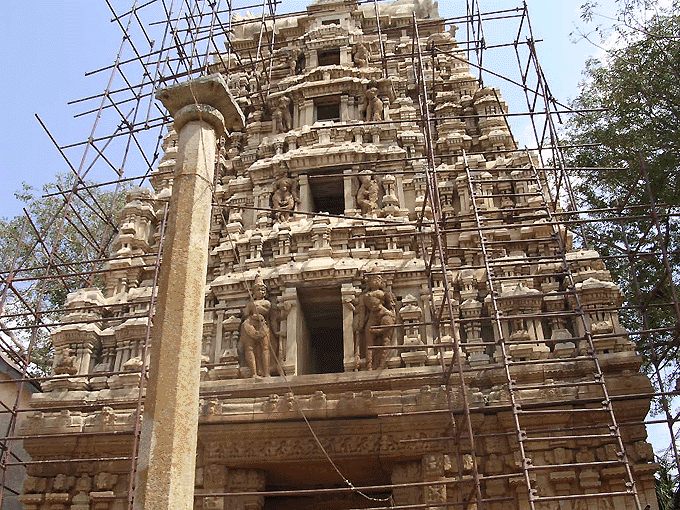
Temple Renovations The pillars of the Mukha-mantapa are intricately carved with pastimes from epic events. The sixty-four pillars are symmetrically aligned and at the base have carved elephants engaged in various activities: fighting, frolicking, marching, and jumping over the linga. One of the pillars bears the Sri Vaishnava caste mark, suggesting a date of construction from the late Vijayanagar period. There is also a kalyana mantapa here, or a dancing dias for Shiva, which is now also used for weddings. This mandapa is built of black stone, unlike the other granite elements of the temple. The beautiful image of Venugopal is found here.
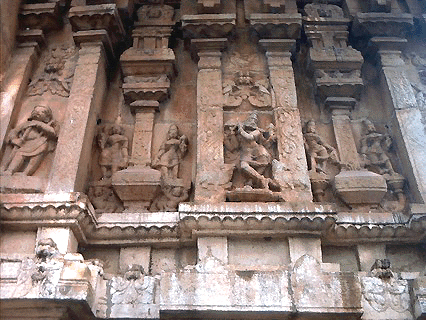
Venugopal To the right of the shrine's main entrance is a beautiful bas relief murti of Shakti. The south mandapa entrance features wonderful ornate columns, decorated with riders on Yalis who are rearing over makara. Some of the outer pillars are supported by seated lions.
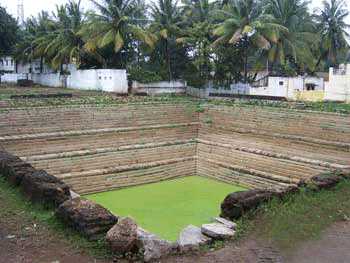
Temple Tank In front of the temple is a small mandapa with four vase-shaped pillars from the Hoysala period. Nandi was situated here originally, but has now been moved to a small shrine east of the main temple. A few hundred meters away from Somesvara Temple is another Vijayanagar monument, the Kolaramma Temple.
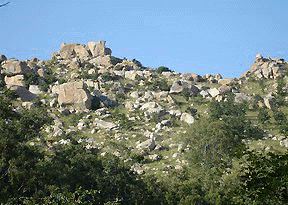
Sathasringa Hills Framing the Kolar area are the Sathasringa Hills, whose hundreds of rocky peaks encircle the heart of Kolar, about 10 km. back from the edge of town. Kolar, historically known as Kuvala-pura, was once the capital of the Ganga dynasty, up until about the late 10th century. It then came under the rule of the Cholas, until the Hoysalas claimed it, proudly calling themselves the ‘Lords of Kuvalala'. After the Vijayanagar rulers, first the Marathas, then the English took over, until giving power to the Mysore kings.
| |
